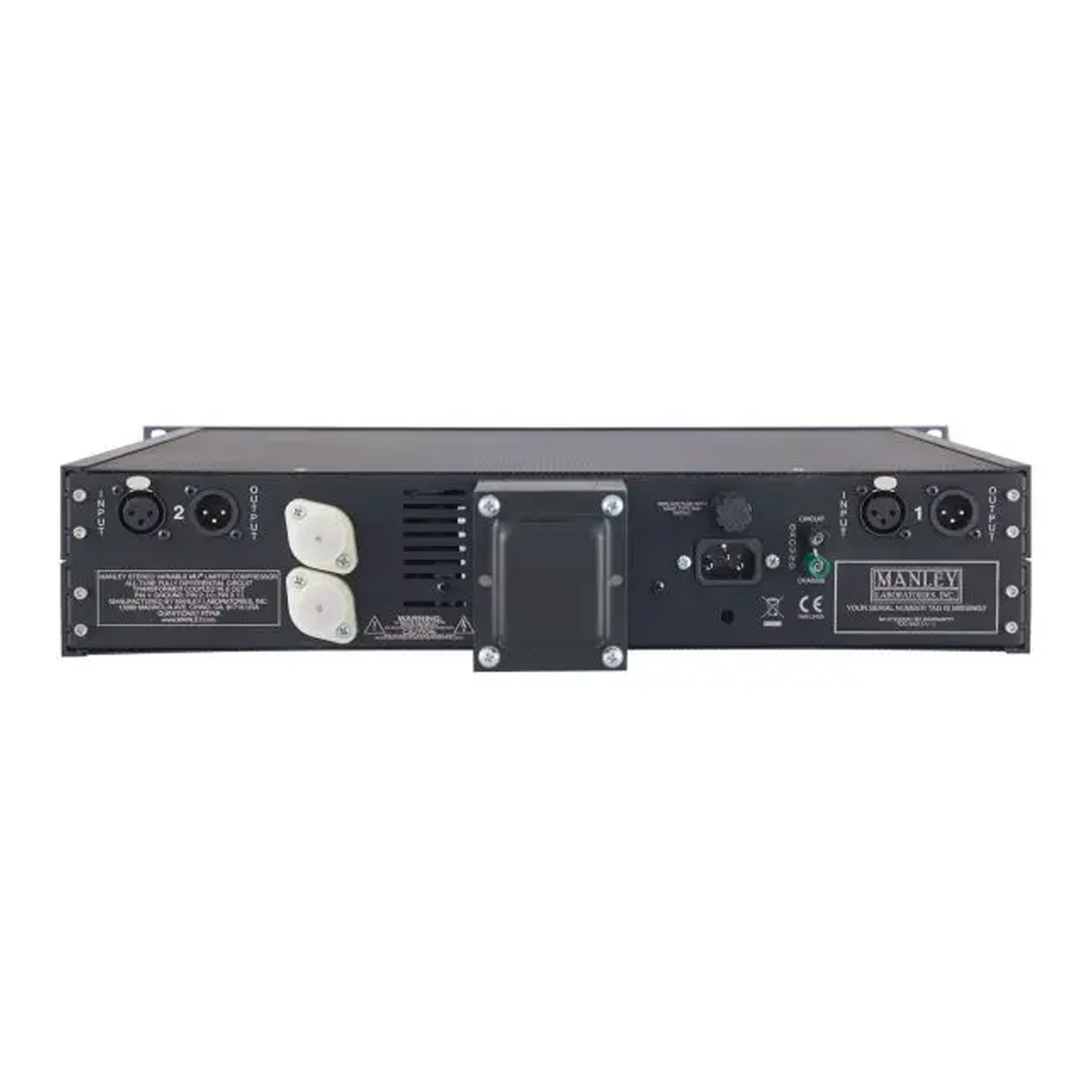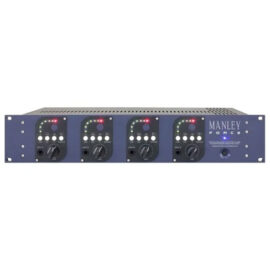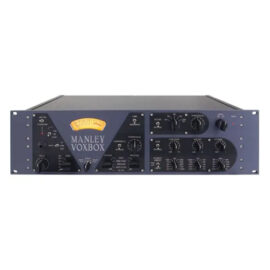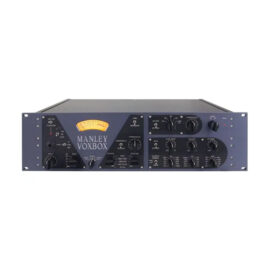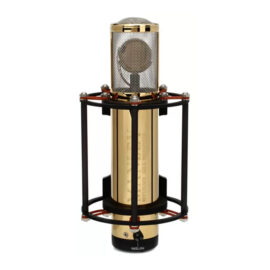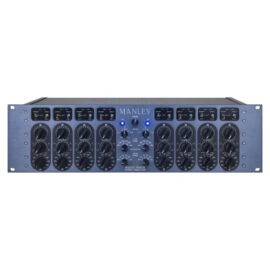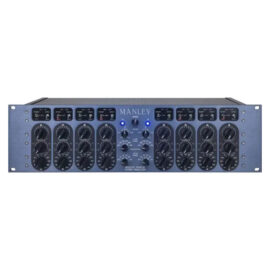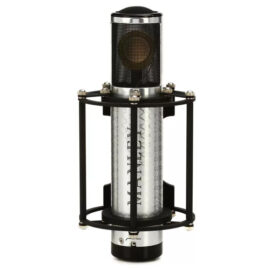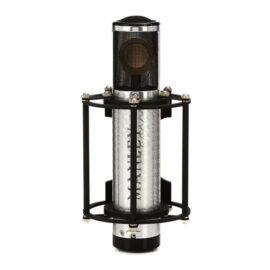- Your cart is empty
- Continue Shopping
MANLEY STEREO VARIABLE MU LIMITERCOMPRESSOR WITH T-BAR UPGRADE OPTION
Manley Variable Mu Compressor/Limiter with T-Bar Mod Features:
- T-Bar Mod for smooth limiting curves, lower THD, and optimized per-channel phase and stereo channel matching
- Variable Gain vacuum tube (per channel): 2 x 6BA6 single pentodes wired in in triode mode
- Manley input and output transformers with pure nickel laminations in mu-metal case
- Flat frequency response from 20Hz–25kHz
- Balanced Inputs and Outputs
- Fully differential all-tube circuitry using one 5751/12AX7, 12AL5, and 12BH7 per channel
- Independently regulated B+ and Heater supplies
- Includes HP Sidechain modification as standard
- Hard-wire Bypass switch
- Silent conductive plastic input attenuator
- Recovery 5 steps: 0.2s, 0.4s, 0.6s, 4sec, 8sec
- Variable Attack: 25msec–70msec
- Continuously variable Threshold
- Switch for Limit or Compress modes
- Front-panel mounted Meter calibration
- Limit (4:1 to 20:1) or Compress (1.5:1)
- Large Illuminated Sifam Meters
- Stereo Link switch
- Handcrafted in Chino, CA
T-Bar Mod: the Variable Mu on Steroids
The renowned Manley Stereo Variable Mu 2-channel limiter/compressor is a favorite of producers and recording engineers. Now, Manley’s T-Bar Mod makes this all-tube, transformer-coupled dynamics powerhouse better than ever! Anyone who has heard the classic Fairchild 670 limiter in action has an inkling of the Variable Mu’s capabilities, but the sound is even sweeter with the Variable Mu. Its adjustable threshold, attack, and release settings are ideal for tracking, mixing, and mastering; while its highpass sidechain gives you added flexibility. The Manley Variable Mu is a high-end, esoteric piece of kit that delivers miraculous results on individual tracks, stems, and full stereo mixes. It’s also incredibly versatile and rock-solid reliable for daily use. A modern all-American legend, the T-Bar Mod Variable Mu fortifies your mixes with glue and punch, crystallizing them into professional, radio-ready product that blasts right out of the speakers. Add one to your studio rack, and hear what you’ve been missing!
Benefits of the T-Bar Mod
Earlier Variable Mu units used a 6386 dual triode for variable gain control — the same vacuum tube used by the Fairchild 670 in the 1950s. When the 6386 went out of production and high-quality samples became hard to source, Manley replaced it with a similar dual triode, the 5670, in 1996. So, do they sound the same? Up to around 6dB of limiting, they do, indeed. But at higher levels of compression, the 5670 tends to sound more “squashed,” and less natural. Some users actually prefer the 5670 version, while others prefer the original 6386, as it can be pushed a lot farther before harmonic distortion builds.
To please all concerned, Manley came up with the T-Bar Mod, which consists of a converter board and surrounding modifications that permit the use of two 6BA6 single pentode tubes — which exhibit smooth limiting curves closely resembling those of the 6386 — wired in triode mode to assume the duties of a single dual triode 6386 or 5670 per channel. The board simply plugs in where the 6386 or 5670 did; however, the mod also involves some additional modifications.
The T-Bar Mod accomplishes three things. If you are purchasing a new Variable Mu, the mod is the optimal method for perfectly matching each per-channel phase-half section and each stereo set. The tubes involved are readily available in quantity, which means Manley can meticulously test and select matched pairs for low noise and low microphonic characteristics. So, you’re getting the most highly optimized version of the Variable Mu ever made, with the smooth, natural limiting characteristics of the original 6386 tube. For owners of 5670 or 6386 Variable Mu units who want or need to upgrade, the T-Bar Mod can be done at Manley’s service center and is also available as a kit for qualified do-it-yourselfers.
A modern all-American legend
Although the Variable Mu is not a clone of one, the Fairchild 670 series used a similar operational principle, and engineers at Sweetwater who have used that legendary unit know this method to be very special. With “mu” meaning gain or amplification factor, the Variable Mu with T-Bar Mod offers true variable gain, unlike most compressor/limiters. How it works is that the 6BA6 tubes are at the core of the peak-reduction action as they are constantly re-biased by the tube-rectified sidechain control voltages. This causes the tubes to smoothly change gain and is responsible for the Variable Mu’s unique and highly effective gain reduction behavior, which gives you maximum level control with minimal artifacts.
From light leveling to heavy limiting
The Variable Mu’s Compress mode is a soft-knee 1.5:1 ratio while the sharper knee Limit mode starts at 4:1 and moves to a more dramatic ratio of 20:1 when limiting over 12dB. Interestingly, the knee actually softens as more limiting is used. Distortion can be creatively employed by turning up the Input and dialing down the Outputs while using very little or no compression.
Perfect for dual-mono or stereo applications
You might notice that the Variable Mu has a ganged input control, but it’s certainly not mono-unfriendly. There are separate threshold, attack, release, and output controls to make compensations with, plus you can always adjust your individual source levels elsewhere. The advantage of the stereo input control becomes clear when you switch to Link mode. And that’s where the Variable Mu excels — on stereo buses and for mastering your final mixes. As one reviewer put it: it’s like pouring “sweet cream” over your mix!
| Type | Vacuum Tube Limiter/Compressor with T-Bar Mod |
| Number of Channels | 2 |
| Controls | Threshold, Ratio, Attack, Recovery, Input/Output Gain |
| Ratio:Compress Mode | 1.5:1, Limit Mode: 4:1 to 20:1 |
| Frequency Response | 20Hz-25kHz |
| Inputs | 2 x XLR |
| Outputs | 2 x XLR |
| Side Chain Inserts | Sidechain Highpass Filter |
| Tubes | 4 x 6BA6, 2 x 5751/12AX7, 2 x 12BH7, 2 x 12AL5 |
| Rack Spaces | 2U |
| Power Source | Standard IEC AC cable (included) |
| Height | 3.5″ |
| Depth | 10″ |
| Width | 19″ |
| Manufacturer Part Number | MSLCHPTBAR |
| Brand |
|---|





